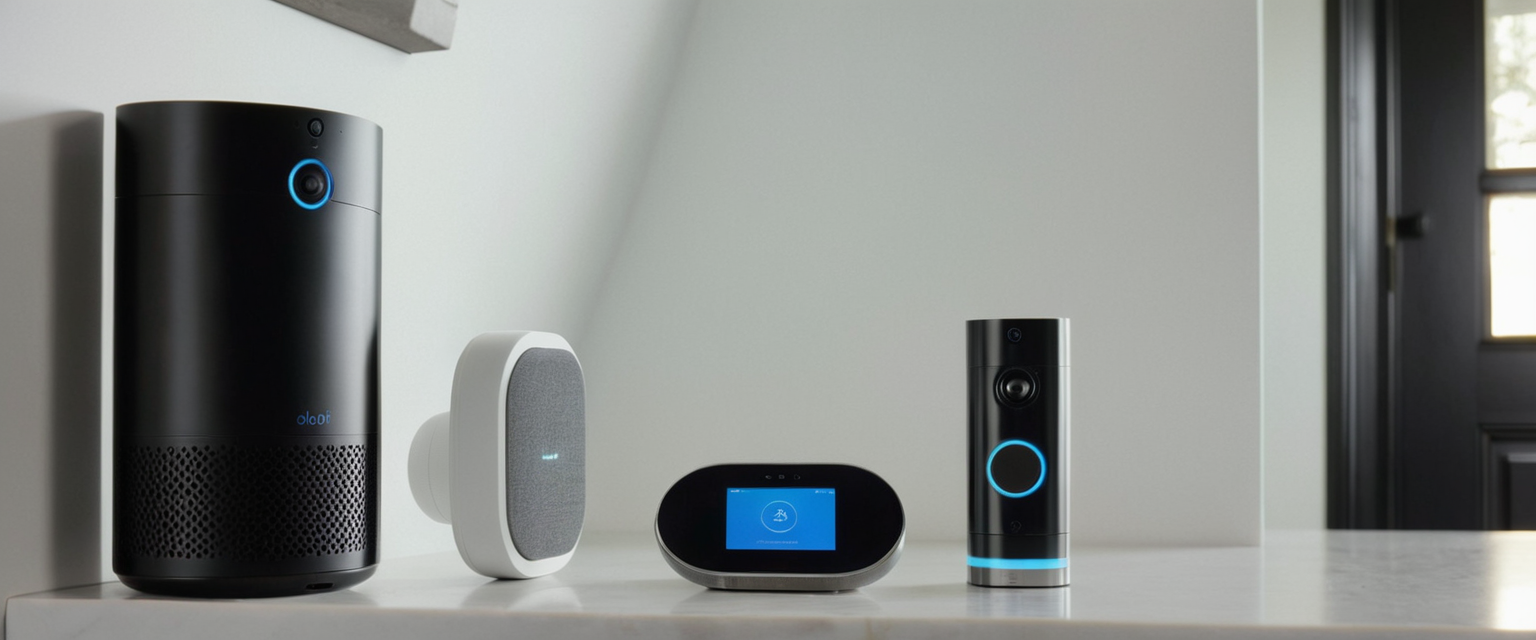
Within the contemporary smart home ecosystem, audio-enabled doorbell cameras and centralized home hub systems represent a critical convergence of convenience and privacy vulnerability. This comprehensive analysis reveals that while these devices promise enhanced security and control, they simultaneously introduce sophisticated audio surveillance risks that operate across multiple vectors, from electromagnetic eavesdropping to institutional data access and vulnerable signal pattern analysis. The convergence of inadequate microphone design standards, lax data governance practices, structural security vulnerabilities, and fragmented regulatory frameworks creates an environment where millions of households face escalating privacy threats, often without full awareness of the extent to which their intimate conversations and daily patterns can be captured, analyzed, and weaponized by various adversaries ranging from opportunistic hackers to law enforcement agencies operating without warrants.
The Proliferation and Integration of Audio-Enabled Smart Doorbells in Residential Environments
The smart doorbell market has experienced extraordinary growth since its inception, fundamentally transforming how homeowners conceptualize residential security and visitor management. The Ring Video Doorbell, which debuted in 2014 after its founder could not find an existing product to solve his package delivery frustrations, catalyzed this revolution. Within merely a decade of that initial product launch, approximately thirty percent of all homes in the United States had installed smart cameras or video doorbells, reflecting the remarkable market penetration of this technology. This proliferation represents more than a simple technological adoption; it fundamentally altered the surveillance landscape of American neighborhoods, with doorbell cameras now constituting what privacy advocates characterize as “one of the largest surveillance apparatuses in the nation.” The devices themselves have become increasingly sophisticated, incorporating high-definition video, motion detection, night vision capabilities, and critically for this analysis, integrated microphones designed to capture ambient audio within their field of view.
What distinguishes modern doorbell systems from earlier residential security equipment is their sophisticated audio capabilities, which extend well beyond simple two-way communication between homeowners and visitors. Most video doorbells come equipped with built-in microphones that operate in concert with motion detection systems, automatically initiating audio and video recording whenever movement is registered in the device’s detection zone. Consumer Reports testing revealed that these recording capabilities possess significant range, with Ring doorbells capturing intelligible speech from approximately twenty feet away under calm conditions, while Arlo Ultra cameras demonstrated even more impressive audio capture abilities at distances up to thirty feet. This extended audio range means that conversations occurring on sidewalks, streets, and in shared spaces far beyond the immediate doorstep fall within the acoustic envelope of these devices, regardless of whether the conversation participants have consented to or even notice they are being recorded.
The integration of home hub systems, which serve as centralized orchestrators for networked smart home devices, further compounds the audio surveillance architecture within residential environments. These hubs function as intermediary control systems that enable users to manage multiple connected devices through a single interface, theoretically enhancing convenience and reducing reliance on individual device apps. Companies like Samsung SmartThings, Amazon’s systems, and Google’s Nest platforms market these hubs as security-enhancing infrastructure that consolidates control and improves device interoperability. However, the centralized nature of these hubs creates new risk vectors, as they become repositories for metadata about device activity, network patterns, and user behavior that can reveal intimate details about household inhabitants even when the underlying communications are encrypted.
Technical Vulnerabilities: Microphone Design Flaws and Electromagnetic Eavesdropping
Beyond conventional hacking and unauthorized access, a sophisticated class of vulnerability has emerged from fundamental design decisions embedded within digital microphone technology itself. Researchers at the University of Florida and the University of Electro-Communications in Japan have documented a previously underappreciated security risk inherent in the widespread adoption of digital MEMS (micro-electromechanical systems) microphones used in laptops, smart speakers, and by extension, many doorbell systems. These microphones, when processing audio data, emit weak radio signals as a kind of unintended electromagnetic interference that contains recoverable information about everything the microphone is picking up. Unlike traditional security vulnerabilities that require intentional tampering or exploitation of authentication systems, this vulnerability emanates directly from the physical design and operational principles of the microphone components themselves.
The practical implications of this vulnerability are strikingly accessible to potential attackers. Researchers demonstrated that voice recordings can be captured and successfully recovered from the radio frequencies emitted by ubiquitous, inexpensive microphones using only basic equipment—an FM radio receiver and a copper antenna—at a total cost of approximately one hundred dollars or less. The captured signals pass through walls with remarkable persistence, allowing adversaries to engage in eavesdropping without any physical proximity to target locations. Testing confirmed that intelligible speech recordings could be recovered even when passing through concrete walls approximately ten inches thick, and the researchers successfully demonstrated recovery of distinct conversations despite significant static interference. The attackers’ ability to employ machine learning-driven programs from companies like OpenAI and Microsoft to clean up the noisy radio signals and transcribe them to text transforms this technical vulnerability into a practical espionage tool that can easily search eavesdropped conversations for keywords of interest.
The vulnerability operates with particular effectiveness on laptop microphones, where the microphone components are frequently attached to long wires that effectively amplify the radio leakage, functioning as unintended antennas that boost the signal strength of the compromised emissions. Testing demonstrated that Google Home smart speakers were also vulnerable to this attack, as were various headsets used for video conferencing. Critically, the eavesdropping remains effective even when users are not intentionally utilizing their microphones. Common browser applications such as Spotify, YouTube, Amazon Music, and Google Drive enable the microphone sufficiently to leak radio signals containing information about anything said in the proximity of the device. This means that doorbell systems with integrated microphones could potentially be vulnerable to such electromagnetic eavesdropping attacks even when not actively recording, as long as the microphone components are powered and processing audio to detect activation keywords.
While researchers have identified potential mitigation strategies—including repositioning microphones within devices to avoid long cables that amplify leakage, and making slight tweaks to standard audio processing protocols to reduce signal intelligibility—manufacturers have shown limited enthusiasm for implementing these protective measures. The absence of widespread adoption suggests that market pressures and the relatively nascent awareness of this vulnerability class have not yet created sufficient incentive for design changes in current and future microphone implementations used in doorbell systems and home hubs.
Security Vulnerabilities in Doorbell Systems: Hacking, Unauthorized Access, and Data Exposure
Beyond the sophisticated electromagnetic eavesdropping vectors, doorbell systems suffer from more conventional security vulnerabilities that create pathways for unauthorized access. Consumer Reports’ investigation revealed critical security flaws in video doorbell products, particularly those manufactured under multiple brand names by the Eken Group in Shenzhen, China. These vulnerabilities extend beyond academic concerns; they create genuine pathways through which stalkers, domestic abusers, and opportunistic cybercriminals can gain control of devices monitoring vulnerable populations.
The Eken and Tuck-branded video doorbells tested by Consumer Reports exhibited vulnerabilities that exemplified fundamental security lapses. The devices appeared to be physically identical despite bearing different brand names, and were sold through major retailers including Amazon, Walmart, and Sears under multiple brand identities including Fishbot and Rakeblue, all controlled through a single mobile app called Aiwit owned by Eken. When Consumer Reports security researchers gained remote access to these doorbells from thousands of miles away, they obtained images showing specific journalists in their residences and could access video feeds through a device’s serial number without requiring any password or even an account with the company. Critically, once a malicious actor obtained the serial number of a vulnerable doorbell, they could continue to remotely access still images from the video feed indefinitely, and if they chose to share that serial number with other individuals or post it online, all those people would gain similar monitoring capabilities.
The most disturbing aspect of these vulnerabilities relates to domestic violence and abuse scenarios. When a stalker or estranged abusive partner pairs a compromised doorbell with their phone, the original owner receives an email notification that they no longer have access to the device. This notification might initially appear to be merely a technological glitch that the victim could remedy by re-pairing the device, but the attacker retains the serial number and can continue accessing still images indefinitely without triggering any notification to the device owner. This architectural flaw transforms the doorbell into a potential weapon for intimate partner violence, enabling perpetrators to monitor when victims and their family members come and go from their home with complete stealth.
Ring doorbell systems, while generally considered more secure than some budget alternatives, have nevertheless experienced significant security incidents. In late 2019, privacy issues were discovered in the Amazon Ring doorbell that could have allowed hackers to steal WiFi passwords and gain access to homeowners’ entire home networks, as well as compromised systems that would enable hackers to access video and audio feeds and spy on residents. Amazon subsequently updated their app to address these specific issues, but the incidents established that even the market leader’s systems were susceptible to fundamental security oversights.
The broader ecosystem testing by Consumer Reports identified additional security vulnerabilities across numerous doorbell models. Testing of twenty-four video doorbells revealed data security and privacy gaps affecting models from Eufy, GoControl, LaView, and Netvue. Specific vulnerabilities included exposure of account information such as email addresses and WiFi passwords, with some devices failing to receive manufacturer patches addressing these issues even after Consumer Reports disclosed the problems. The prevalence of these vulnerabilities reflects a systemic issue where manufacturers prioritize feature richness and rapid market entry over fundamental security architecture, creating a landscape where vulnerabilities persist across the product ecosystem.
Law Enforcement Access and Governmental Surveillance Without Warrant
A particularly concerning dimension of doorbell audio risks extends beyond private cybercriminals to law enforcement agencies wielding substantial power to access recordings without meaningful judicial oversight. Ring has established a controversial partnership with police departments across the United States, creating dedicated portals for law enforcement to request doorbell camera footage. While Ring’s stated policy maintains that footage belongs to device owners and that police must request access, the company has previously provided police departments with background statistics and information on device users, effectively helping officers target particular neighborhoods for doorbell camera requests. The practical effect of these partnerships has generated significant concern among privacy advocates who characterize the arrangement as turning police into “doorbell camera salesmen” who encourage citizen adoption to expand the surveillance network available to law enforcement.
More problematic still, Ring has admitted in official statements that it sometimes shares video with law enforcement without users’ permission in certain circumstances, even in 2022 when the company claimed to require greater transparency in the process. The legal framework governing these interactions is surprisingly weak. When Ring does require a court order before providing footage, those orders often provide Americans with less protection than might initially appear, given that Ring has not established a robust track record of resisting far-reaching warrants for users’ video recordings of and inside their homes. This has become practically significant, as Ring reportedly receives thousands of search warrants each year—a number that is growing. The Federal Trade Commission has acknowledged these dynamics, with the FTC’s stipulated final order against Ring noting concern about the problematic relationship between Ring and law enforcement.
The constitutional implications merit serious consideration. While Ring is obligated to require a court order for footage access, this process has historically provided limited protection precisely because many courts issue broad warrants without carefully scrutinizing whether the requested access is appropriately tailored to legitimate law enforcement purposes. The precedent established through these interactions effectively creates a secondary surveillance apparatus operated jointly by private companies and government agencies, accessible to law enforcement with evidentiary standards that differ significantly from traditional Fourth Amendment jurisprudence protecting against unreasonable searches and seizures.
Protect Your Digital Life with Activate Security
Get 14 powerful security tools in one comprehensive suite. VPN, antivirus, password manager, dark web monitoring, and more.
Get Protected Now
Data Governance Failures and Third-Party Information Sharing
The audio data captured by doorbell systems does not remain confined within the ostensible security and privacy architecture erected by manufacturers. Ring, despite claiming to prioritize the security and privacy of its customers, has demonstrated a pattern of expansive data sharing with third-party entities that operate outside normal accountability relationships with users. An investigation by the Electronic Frontier Foundation revealed that the Ring app for Android devices was “packed with third-party trackers sending out a plethora of customers’ personally identifiable information.” Four main analytics and marketing companies were identified as receiving information including users’ names, private IP addresses, mobile network carriers, persistent identifiers, and sensor data from the devices themselves.
Most alarmingly, companies like AppsFlyer received comprehensive sensor data from users’ devices, including magnetometer, gyroscope, and accelerometer readings along with current calibration settings. MixPanel, identified as receiving more information than any other third party, obtained users’ full names, email addresses, device information such as operating system version and model, whether Bluetooth was enabled, and app settings such as the number of locations where users had Ring devices installed. These third parties are mentioned only peripherally in Ring’s privacy documentation, with some receiving no mention at all in materials accessible to customers prior to data sharing. The fundamental problem underlying this architecture is that Ring intentionally delivers sensitive data to parties “not accountable to Ring or bound by the trust placed in the customer-vendor relationship.”
The implications of this data sharing infrastructure extend beyond mere surveillance. The analytics and tracking companies receiving this information can combine seemingly innocuous bits of data to form comprehensive digital fingerprints of users’ devices, effectively enabling these trackers to spy on what users do in their digital lives and when they do it, all without meaningful user notification or consent and, in most cases, with no available recourse to mitigate the damage. This dynamic transforms individual privacy violations into coordinated, cross-platform tracking infrastructure that extends far beyond the original scope of doorbell video surveillance.
Google’s handling of microphone data in its Nest Secure home security system exemplified similar failures in transparency and data disclosure. When Google announced in early 2019 that Nest Secure could function as a Google Assistant virtual assistant, privacy advocates quickly recognized that this new functionality required a built-in microphone—a component that had never been disclosed to customers despite being present in the devices since their 2017 release. The microphone was not mentioned in any product material or specification sheet, despite the company’s later claim that the omission was “an error” rather than deliberate concealment. Google emphasized that the microphone was disabled by default and remained off until users specifically enabled it, yet the company had failed to provide customers with basic information about this critical hardware component, preventing informed decision-making at the point of purchase.
This incident illuminated a broader pattern of corporate behavior regarding microphone disclosure. Google attempted mild justification of the omission by claiming that most home security systems have built-in microphones because this is what sound-sensing security features require, effectively attempting to reframe a transparency failure as a reasonable industry practice. This argument resembles victim-blaming; the proper industry practice should involve and has involved disclosure by other manufacturers precisely to enable customers to make informed purchasing decisions. The incident raised legitimate concerns that if secret microphones could be discovered in one Google product, chances were high that undisclosed microphones existed in other devices not yet subjected to similar scrutiny.
Domestic Abuse and Intimate Partner Violence Facilitated Through Smart Home Technology
The vulnerabilities in doorbell and home hub audio systems acquire particular urgency when examined through the lens of intimate partner violence and domestic abuse. An emerging and lesser-known form of technology-facilitated domestic abuse involves the weaponization of smart home systems, which are marketed on promises of increased comfort and convenience through advanced remote controls, yet in abusive contexts erode victims’ privacy and enable perpetrators’ use of sophisticated surveillance and control tactics. Smart speakers like Amazon’s Alexa devices, Ring doorbells, and integrated smart home hubs can be weaponized by intimate partners to listen to and record conversations, access live video streams of household movements, and adjust environmental controls to create physical discomfort for household members.
The technical capabilities that manufacturers advertise as features—remote access, shared user accounts, microphone functionality—become instruments of control and surveillance when deployed in abusive relationships. Perpetrators with access to smart home systems can listen into conversations through multiple devices simultaneously, access live video feeds to monitor when household members arrive and depart, and systematically alter environmental conditions including heating, lighting, and appliance operation to create an atmosphere of control and discomfort. Victims may not be fully aware of the precise nature or scale of this abuse, and perpetrators may successfully gaslight their partners into believing they are experiencing mental health concerns such as paranoia, particularly when the victim suspects surveillance but lacks technical knowledge to identify or verify the extent of the monitoring.
Women subjected to abuse by male partners face particular vulnerability to this form of technology-facilitated abuse, given that women generally experience lower levels of technological confidence compared to men. Perpetrators may exaggerate their own technical abilities or convince their partners that devices possess more sophisticated surveillance features than they actually have, exploiting information asymmetries to enhance the psychological control dimension of the abuse. The Federal Communications Commission and various state attorneys general have acknowledged these patterns, recognizing that intimate partner violence advocates raise genuine safety concerns about doorbell and smart home technology that extend beyond conventional privacy considerations.
User Awareness and Attitudes Toward Audio Privacy in Connected Devices
Notwithstanding the substantial technical risks and vulnerabilities documented throughout the security research community, public awareness and concern remain unevenly distributed. Research examining users’ security and privacy attitudes regarding smart home devices reveals that while users are developing security and privacy concerns, their threat modeling and risk assessments are often incomplete or misaligned with actual vulnerabilities. Users’ assumptions about adversaries drive their likelihood assessments, and they frequently associate the likelihood of attacks with the required technical sophistication. For instance, some users assumed that attackers could disable security systems using inexpensive radio equipment costing merely twenty dollars, demonstrating awareness of relatively sophisticated attack vectors, while others doubted the likelihood of attacks that appeared resource-consuming or that offered low benefits to attackers.
Regarding voice assistants specifically, research demonstrates concerning gaps between users’ subjective sense of control and objective reality. Fifty-seven percent of survey participants reported feeling in control of their data when using voice assistants, yet seventy-seven percent claimed they would be more likely to use voice assistants with enhanced privacy features and greater transparency. This disconnect suggests that many users either lack comprehensive understanding of the data collection and sharing practices of these devices or feel relatively powerless to affect change. Google Assistant proved most popular at thirty-four percent of respondents, followed by Siri at twenty-three percent and Alexa at twenty-two percent, yet worldwide, forty-five percent of smart speaker users express concern about voice data privacy, and forty-two percent worry about voice data hacking.
The “illusion of control” phenomenon appears to characterize user attitudes toward audio privacy in connected devices. Despite evidence that these systems collect extensive audio data, employ third-party analytics companies, and operate according to privacy policies users rarely read or fully comprehend, a substantial segment of the user population maintains subjective confidence in their ability to protect their privacy. This psychological mismatch between perceived and actual control creates conditions where users inadvertently expose themselves to surveillance risks while maintaining false confidence in their agency within the system.
Legal and Regulatory Frameworks Governing Audio Recording
The legal landscape governing audio recording by doorbell cameras remains fragmented and often misaligned with technological realities. Federal law in the United States employs a “one-party consent” standard at the baseline, meaning that recording of conversations is lawful when at least one party to the conversation provides consent. This federal standard applies to all phone calls and in-person conversations, and the consent of the recording party itself (if they are a participant in the conversation) suffices to render recording lawful under federal law. However, individual states have adopted varying consent regimes, creating a complex patchwork where legality depends critically on the jurisdiction where the recording occurs.
Approximately thirty-eight states follow the federal one-party consent standard, meaning that homeowners operating doorbell cameras in these jurisdictions can legally record conversations on their property without obtaining consent from other parties to those conversations. However, approximately twelve states adopt an all-party or two-party consent standard, requiring that all participants in a conversation provide explicit consent before recording. These all-party consent states include California, Connecticut, Delaware, Florida, Hawaii, Illinois, Kansas, Maryland, Massachusetts, Michigan, Montana, Nevada, New Hampshire, Pennsylvania, Utah, and Washington. In these jurisdictions, homeowners operating doorbell cameras must navigate more complex legal obligations, particularly regarding audio capture from conversations occurring on public sidewalks or streets that border their property.
The intersection of property rights and privacy rights creates additional complexity. Generally, homeowners retain the legal right to install video cameras on their own property, and these recordings are lawful even without notice to passersby. However, audio recording operates under different legal frameworks with greater restrictions. If a doorbell camera’s microphone captures conversations between third parties without the consent of at least one participant (in one-party consent states) or all participants (in two-party consent states), the homeowner could potentially face liability under wiretapping laws that criminalize unauthorized recording of conversations. The practical effect of this legal regime is that video doorbells can legally capture images of public spaces without restriction in most jurisdictions, but the audio component introduces legal liabilities that vary significantly across jurisdictions and remain poorly understood by most homeowners.
Recent case law has begun addressing these novel legal questions. A 2023 judgment in the United Kingdom found a homeowner liable for breaching his neighbor’s privacy through his Ring doorbell cameras, which were found to be capturing audio and footage of the neighbor’s property from sixty feet away, with the court determining that the camera setup breached privacy expectations. A comparable case in California, by contrast, sided with the homeowner because the footage did not show anything private or inside the neighbor’s home, suggesting that American courts may apply narrower privacy protections than their British counterparts. These divergent outcomes illustrate how the legal framework continues evolving through incremental case law development, with clear precedents still emerging.

Encrypted Network Traffic and Penetrating the Privacy of Encrypted Communications
A sophisticated dimension of audio privacy risk emerges from the distinction between encryption in transit and the fundamental vulnerability of encrypted systems to behavioral analysis through traffic pattern observation. Researchers at the University of Georgia developed a system called ChatterHub that can successfully disclose the cyber activity of a variety of smart home hubs almost ninety percent of the time despite all traffic being encrypted. While the individual content of communications remains protected by encryption, the patterns, sizes, and timing of packets reveal substantial information about device activity and user behavior patterns.
For instance, when a smart home lock engages, it sends a packet to the hub, which then transmits that packet to the server, and while the actual content of the “lock” command is encrypted, the distinctive pattern, size, and timing of the packet sequence allows attackers to accurately determine that locking has occurred. More concerningly, attackers can inject garbage packets into the encrypted communication patterns, and these injected packets will be delivered to smart locks and potentially cause them to malfunction, theoretically preventing homeowners from locking their doors while maintaining a false appearance of normal function in the user’s app. This attack vector reveals a fundamental vulnerability in the encryption paradigm itself; encryption successfully protects the content of communications while simultaneously rendering encrypted traffic patterns analyzable for behavioral inference through machine learning techniques.
The implications for audio-enabled devices are substantial. While audio communications from doorbell microphones to cloud storage servers might be encrypted in transit, the frequency, duration, and patterns of audio transmission create metadata fingerprints from which adversaries can infer significant information about household activity, visitor frequency, and behavioral patterns. An attacker observing encrypted network traffic patterns could determine with high confidence whether residents are home, whether they receive frequent visitors, and whether unusual activity is occurring, all without accessing the underlying audio content.
Home Hub Centralization and Network Vulnerability Amplification
The architectural movement toward centralized home hub systems intended to enhance security and privacy through reduced individual device internet connectivity paradoxically introduces new vulnerability vectors. These hubs concentrate multiple device communications through a single point, ostensibly providing improved security through centralized management. However, the hub itself becomes a high-value target for attackers, and the aggregation of device communication patterns creates a more comprehensive picture of household activity than would be available from analyzing individual device traffic.
Smart home hubs designed to improve security by preventing individual devices from directly connecting to the internet still transmit metadata about device activity and user behavior to cloud backends operated by manufacturers. Researchers have demonstrated that even when individual smart devices are concealed behind hubs, attackers can still infer smart-home devices’ capabilities, states, and actions by passively listening to wireless network traffic without physical proximity to the target home and without prior knowledge of the home’s device configuration. This attack, termed a “scout attack,” allows potential burglars to identify targets containing valuable goods and determine whether anyone is home, or enables “targeted attacks” where attackers identify household activity patterns to plan crimes including physical assault.
The encryption of hub communications does not prevent these inferences because machine learning models trained on traffic patterns from known smart home devices can classify the activity of unknown targets with high accuracy despite the absence of content access. This vulnerability fundamentally undermines the security-through-obscurity concept underlying hub-based architecture, as the behavioral footprints of encrypted communications leak sufficient information to enable sophisticated attacks that compromise the physical security of residents.
Mitigation Strategies and User-Centric Privacy Controls
Recognizing the substantial audio privacy risks embedded in doorbell and home hub systems, users and manufacturers have begun implementing mitigation strategies, though meaningful protections remain inconsistently applied across the market. On the user side, privacy-conscious consumers can implement multiple tactical measures to reduce audio capture and exposure. Ring doorbell users can disable audio streaming and recording through privacy settings, preventing sound from being transmitted or recorded during motion-activated events. This control removes audio entirely from the device’s recording, though it simultaneously prevents the homeowner from using two-way audio communication features.
Privacy zones represent another important control mechanism, allowing users to define areas of the device’s field of view that will not appear in live or recorded footage. Ring allows configuration of up to two privacy zones per device, enabling users to block public sidewalks, neighbors’ properties, and other spaces where audio recording might raise privacy concerns. When combined with audio disabling, privacy zones provide users with granular control over what information the doorbell captures and transmits. However, these features require active user configuration, remain inaccessible on some device models, and their effectiveness depends on users having sufficient privacy awareness to implement them.
For Google Nest devices, users can implement similar privacy protections, including muting microphones and disabling audio features through device controls located on the back of the device, where microphone mute buttons are typically positioned. Google Assistant-enabled devices feature physical switches that users can toggle to disable the microphone entirely, typically indicated by orange or red coloring when the microphone is turned off. This approach provides immediate, verifiable privacy protection independent of app-based controls that could potentially be compromised.
End-to-end encryption represents a more technically sophisticated privacy protection that prevents even the service provider from accessing recordings. Ring implemented end-to-end encryption as an optional feature that users must explicitly enable. When enabled, end-to-end encryption protects video and audio recordings with a passphrase created by the user, and only the user’s enrolled mobile device can decrypt and view recordings. However, enabling end-to-end encryption disables certain features of the doorbell, including the ability to watch videos on third-party devices, creating a trade-off between privacy and functionality. This opt-in approach means that users who fail to actively enable the feature receive no end-to-end encryption protection, perpetuating the pattern where privacy-conscious users must take affirmative steps to protect themselves.
At the systemic level, privacy-preserving architecture involving local processing and reduced cloud dependency offers more fundamental protection. Open-source platforms like Home Assistant enable users to maintain complete local control over their smart home systems without requiring cloud connectivity or third-party data sharing. By deploying local hubs running open-source software and utilizing protocols like Zigbee and Z-Wave that create private mesh networks separate from the broader internet, users can eliminate the cloud-based surveillance architecture that characterizes contemporary commercial doorbell and hub systems. However, this approach requires substantially greater technical expertise and active engagement than commercial alternatives, creating a barrier to adoption that limits its availability to non-technical users.
Recommendations and Path Forward
The proliferation of audio-enabled doorbell cameras and centralized smart home hubs has created a surveillance infrastructure that imposes substantial risks on residents and neighbors alike, with particularly severe implications for vulnerable populations including domestic violence victims and individuals subject to stalking. Meaningful improvement in this landscape requires coordinated action across multiple constituencies, including manufacturers, regulators, and individual users.
Manufacturers should be required to implement fundamental privacy protections by default rather than relegating them to opt-in settings that most users never activate. End-to-end encryption should be the default state for all doorbell audio recording, with clear disclosure of any features that become unavailable when encryption is enabled. Microphones should be disclosed transparently in all product documentation, and users should receive clear notification when audio recording is occurring, potentially through physical indicators such as illuminated LEDs that provide unambiguous feedback about active audio capture.
Regulatory bodies should establish baseline security requirements for internet-connected devices that capture audio, including mandatory security updates, transparent vulnerability disclosure processes, and multi-factor authentication for account access. Two-factor authentication should no longer be optional, as it represents an essential baseline protection against account compromise. Law enforcement access to doorbell and home hub data should require meaningful judicial oversight consistent with Fourth Amendment standards rather than the current practice where broad warrants are routinely granted without careful scrutiny.
Individual users should adopt privacy-protective practices including disabling audio recording when not needed, configuring privacy zones to exclude public spaces and neighbors’ properties, changing default passwords immediately upon installation, and enabling available security features such as end-to-end encryption and two-factor authentication. Users should also research their local audio recording laws to ensure compliance with applicable consent requirements and consider posting visible notices indicating that recording is occurring, both to comply with legal requirements and to provide transparency to visitors and neighbors.
The Final Chime on Audio Security
The audio risks embedded in contemporary smart doorbell and home hub systems emerge from multiple converging vulnerabilities spanning fundamental microphone design flaws, inadequate security architecture, aggressive data sharing practices, weak legal frameworks, and insufficient user awareness. The electromagnetic eavesdropping vulnerability demonstrated by University of Florida researchers represents a particularly concerning development, as it indicates that audio capture risks extend beyond conventional cybersecurity breaches to fundamental physical phenomena embedded in the microphone components themselves. When combined with inadequate encryption practices, third-party data sharing arrangements, law enforcement access pathways, and the documented weaponization of these systems in intimate partner violence contexts, the aggregate risk profile of current doorbell and home hub systems reveals substantial privacy threats that warrant serious concern.
The fragmented regulatory landscape, where audio recording legality varies dramatically across jurisdictions and evolves through incremental case law development, creates uncertainty that leaves both users and developers navigating complex compliance obligations without clear guidance. The illusion of control that characterizes user attitudes toward audio privacy in connected devices—where most users feel relatively confident in their ability to protect their privacy despite objective evidence of extensive data exposure—compounds the problem, as it reduces pressure on manufacturers to implement more protective defaults.
Progress toward meaningful privacy protection will require manufacturers to move beyond opt-in privacy features that most users never activate, toward default privacy-protective architecture where users must actively opt out of protections rather than opt in. Regulatory bodies must establish baseline security and transparency requirements that reflect the genuine risks these systems pose. Law enforcement agencies must respect Fourth Amendment protections and not exploit doorbell camera footage access as a workaround to avoid obtaining traditional warrants with meaningful judicial oversight. Ultimately, the promise of smart home convenience must be balanced against the substantial privacy costs it currently imposes, particularly on the most vulnerable populations. Until these systemic changes occur, audio-enabled doorbell cameras and home hubs will continue to represent significant vectors through which intimate personal information, daily behavioral patterns, and confidential conversations escape the boundaries of private spaces and fall within reach of multiple categories of potential adversaries.






